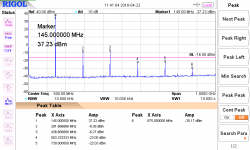The people who wrote the rules for amateur radio apparently thought that spurious emissions were a potential problem for the entire radio spectrum, not just for other radios operating in the same radio service.
Whether a "dirty" Baofeng interferes with other radios is not the issue. The issue is that amateur radio operators are given tremendous freedom to experiment with various communications modes, to operate high-power transmitters, and build their own transmitters. In exchange for this freedom, amateur radio operators are given a set of technical standards that they are expected to meet. Among them are "don't transmit with radios that produce spurious emissions".
Contrast this with GMRS where licensees are required to buy commercially-produced FCC-certified transmitters, are limited to 50 watts, and can only use analog FM (with limited exceptions).
We might question why amateur radio has these technical standards, but I, personally, don't spend a lot of time thinking about whether or not violating these standards might cause a problem...the rules are still the rules. In other words, we might be able to justify bending the rules for technical reasons, but, administratively, we still have to follow the rules.
For amateur radio transmitters operating between 30 and 225 MHz, the spurious emissions must be at least 60 dB below the fundamental. If that transmitter has a mean power of 25 watts or less, the spurious emissions must not exceed 25 µW (yes, that's microwatts) and must be at least 40 dB below the fundamental.
I can't tell you which radio I was testing in the attached screen capture, but the trace is typical of cheap, Chinese radios from 5-6 years ago. Note that the second and third harmonics are 46 dB down from the fundamental. That's great! But, the second and third harmonics are still greater than -16 dBm (25 µW), so they exceed the limits imposed by the rules. (Before someone asks, a 40 dB attenuator was used on the spectrum analyzer input.)
View attachment 169311


